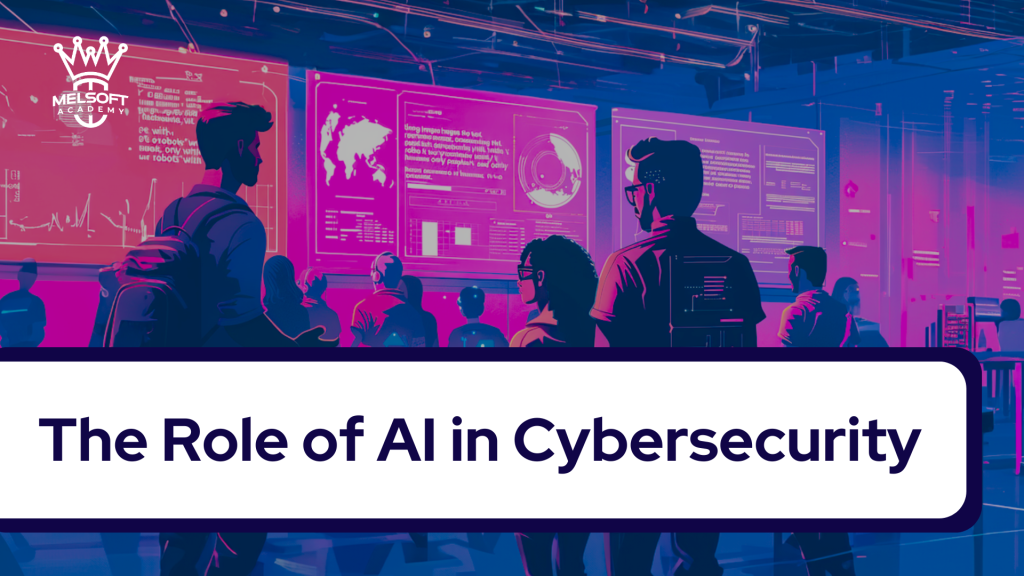October is Cybersecurity Awareness Month, and with the digital world becoming increasingly intertwined with our daily lives, understanding and implementing robust cybersecurity measures is more critical than ever. This year, we want to highlight a crucial element in the ongoing battle against cyber threats: Artificial Intelligence (AI). While the tips below offer essential practices for individual online safety, the future of cybersecurity relies heavily on the innovative applications of AI.
The Growing Threat Landscape
Before diving into AI’s role, let’s acknowledge the ever-evolving nature of cyber threats. According to Zippia, a staggering one in three individuals experiences a digital breach annually. This alarming statistic underscores the need for proactive and adaptive security measures. Traditional methods, while still important, are struggling to keep pace with the sophistication and sheer volume of modern cyberattacks. Phishing scams, ransomware attacks, viruses, and other malicious activities are becoming increasingly complex, demanding a more intelligent and responsive approach to security.
10 Essential Internet Safety Tips
Before exploring the power of AI, let’s review some fundamental internet safety practices. These are crucial for personal online protection and should be implemented alongside AI-powered solutions.
- Discern Before Downloading: Never open attachments or click links from unknown senders. Always verify the sender’s identity through trusted channels before interacting with any communication.
- Protect Your Passwords: Create strong, unique passwords for each online account. Utilize a password manager and enable multi-factor authentication (MFA) whenever possible. Regularly update your passwords.
- Close Abandoned Accounts: Regularly review your online accounts and close any that are no longer in use. Inactive accounts are vulnerable to breaches and can be exploited by cybercriminals.
- Validate Before Paying: Always verify the security of websites before making online transactions. Look for the “https” prefix and the padlock icon in the URL. Only transact with trusted sources and be wary of unsolicited payment requests.
- Limit Social Sharing: Avoid oversharing personal information on social media. Protect your privacy by limiting who can access your profiles and posts.
- Look Out for Fake Profiles: Be cautious of individuals you meet online. Verify their identities before sharing personal information. Report suspicious profiles to the relevant platform.
- Deny Third-Party Access: Avoid using third-party logins whenever possible. If you must use them, carefully review the permissions granted to the third-party application.
- Be Smart With Your Smart Devices: Secure your IoT devices by changing default passwords, installing firmware updates, and limiting device permissions.
- Use a VPN: A VPN encrypts your browsing data, protecting your privacy, especially when using public Wi-Fi networks.
- Install Anti-Virus Software: Regularly update your anti-virus software to protect your devices from malware.
The AI Revolution in Cybersecurity
AI is rapidly transforming cybersecurity, offering solutions that are more effective and efficient than traditional methods. Its ability to analyze vast amounts of data, identify patterns, and learn from experience makes it an invaluable asset in the fight against cybercrime. Here are some key applications:
- Threat Detection and Prevention: AI algorithms can analyze network traffic and system logs to identify anomalies and potential threats in real-time. This proactive approach allows for immediate response and mitigation of attacks before they cause significant damage. Machine learning models can learn from past attacks to predict future threats and adapt to evolving attack techniques.
- Phishing Detection: AI can analyze emails and websites for suspicious characteristics, such as unusual language, links, or sender addresses, to identify and block phishing attempts. This significantly reduces the risk of successful phishing attacks.
- Vulnerability Management: AI can automatically scan systems and applications for vulnerabilities, prioritizing those that pose the greatest risk. This allows security teams to focus their efforts on addressing the most critical weaknesses.
- Incident Response: AI can automate the process of incident response, accelerating the identification, containment, and remediation of security breaches. This reduces the impact of attacks and minimizes downtime.
- Security Information and Event Management (SIEM): AI enhances SIEM systems by automating the analysis of security logs, identifying patterns, and correlating events to provide a more comprehensive view of security threats.
- Malware Detection and Analysis: AI can analyze malware samples to identify their behavior and classify them, enabling faster and more effective responses to new and emerging threats. AI-powered sandboxing techniques allow for safer analysis of potentially malicious code.
- User and Entity Behavior Analytics (UEBA): UEBA systems leverage AI to monitor user and entity behavior, identifying anomalies that may indicate insider threats or compromised accounts.
Challenges and Ethical Considerations
While AI offers significant advantages in cybersecurity, it’s crucial to acknowledge the challenges and ethical considerations:
- Data Bias: AI models are trained on data, and if that data is biased, the resulting models may be inaccurate or discriminatory.
- Adversarial Attacks: Cybercriminals are actively developing techniques to evade AI-based security systems.
- Explainability and Transparency: Understanding how AI models make decisions is crucial for building trust and ensuring accountability.
- Privacy Concerns: The use of AI in cybersecurity can raise privacy concerns, particularly regarding the collection and analysis of personal data.
The Future of Cybersecurity: A Collaborative Approach
The future of cybersecurity is not about replacing human expertise with AI, but rather about creating a collaborative partnership. AI can automate many tasks, freeing up human analysts to focus on more complex and strategic challenges. The combination of human ingenuity and AI’s analytical power will be crucial in effectively combating the ever-evolving threat landscape.
Learn More and Join the Fight
If you’re passionate about cybersecurity and want to contribute to this crucial field, consider exploring a career in cybersecurity. Melsoft Academy offers comprehensive training programs, including our Cybersecurity Analytics Bootcamp, to equip you with the skills and knowledge needed to excel in this dynamic industry. By joining the fight against cybercrime, you can help protect individuals and organizations from the devastating consequences of cyberattacks. Let’s work together to build a safer and more secure digital world.


